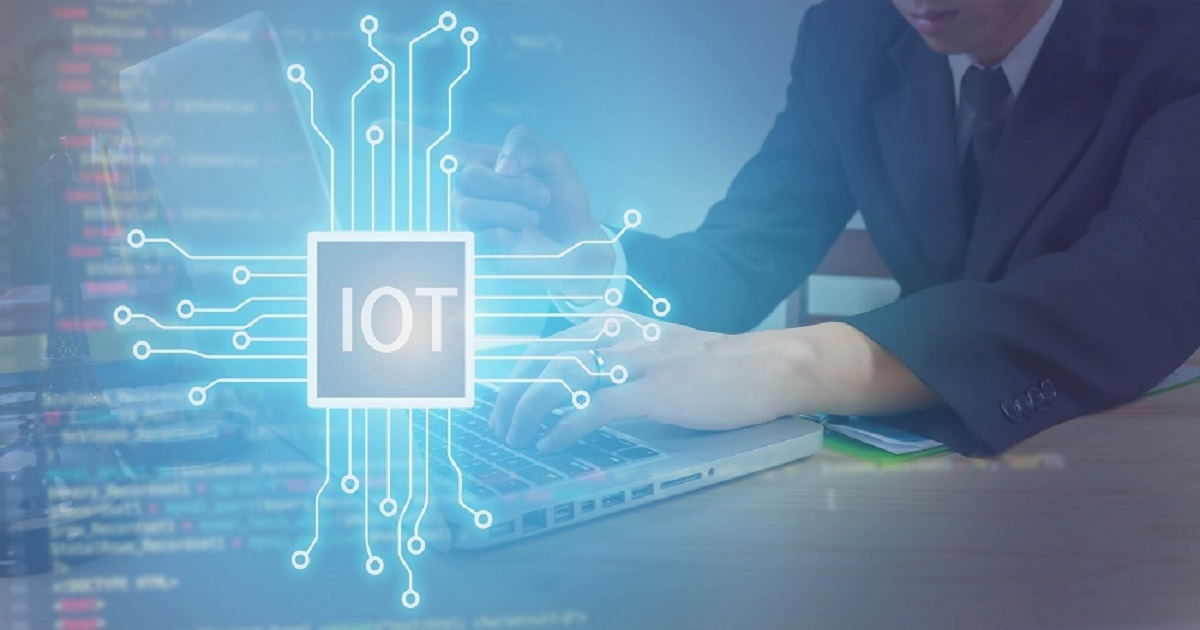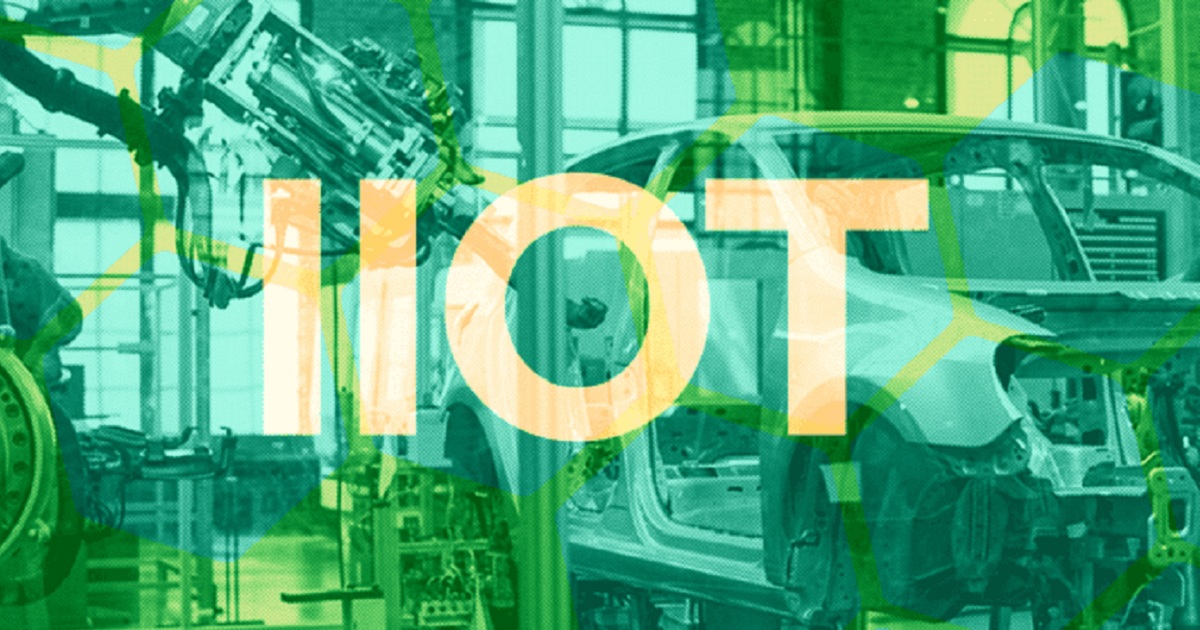
Industrial IoT, IoT Security
Article | July 12, 2023
Understanding the Impact of IoT Device Management
The Internet of Things (IoT) industry is growing exponentially, with the potential to become limitless. The current range of existing and potential Internet of Things devices is in itself quite enormous. This also gives businesses an opportunity to pay more attention to the newest technologies.
In ascenario with rapidly increasing numbers of devices, manual management of devices becomes close to impossible, laced with human errors. Moreover, keeping an eye on hundreds of devices one by one to make sure they work the way they should is not an easy task to undertake.
Businesses at the outset of IoT adoption are most often unaware of why they require a device management platform.This is precisely why a device management platform is so crucial.It can effectively connect toall of theconnected devices and get the required information from them in the right way.
An effective device management platform can turn out to be the vital aspect that will define the success of any small or large IoT implementation project. Such a platform would ideally allow organizations to manage their internet-connected devices remotely.
"If you think that the internet has changed your life, think again. The IoT is about to change it all over again!" — Brendan O'Brien, Chief Architect & Co-Founder, Aria Systems.
Why Do Organizations Need an IoT Device Management Platform?
An effective IoT device management platform offers simplified provisioning, centralized management, and real-time insights into all existing devices and integrations to help organizations stay on top of their deployment.
Device management platforms help you keep a check on the growing number of devices while keeping errors at bay, with your growing number of connected devices. It would ensure that you have a clear dashboard and an alerting system as an effective supporting system. In addition, getting involved with IoT device management platforms can also help you in a number of other ways.
It acceleratestime-to-market and helps reduce costs
The management platform enables secure device on and offboarding
It also streamlines network monitoring and troubleshooting
IoT simplifies deployment and management of downstream applications
It mitigates security risks
Evaluating the Future of IoT Device Management
It is predicted that the world will have more than 100 billion IoT-connected devices by 2050. The future potential of the IoT is limitless, and the potential is not about enabling billions of devices together but leveraging the enormous volumes of actionable data thatcan automate diverse business processes.
Critical Aspects of the IoT's Future
The critical aspects of IoT predictionsare fast impacting several categories all across the globe, ranging from consumer to industrial.
IoT Companies and a Circular Economy
IoT firms are assisting in the development of a future with less waste, more energy efficiency, and increased personal autonomy. A connected device system, on the other hand, must be feedback-rich and responsive, and activities must be linked via data in order to be sustainable. Ways to achieve a responsive and actionable system include:
Extending the use cycle with predictive maintenance.
Increasing utilization and reducing unplanned downtime.
Looping the asset for reuse, remanufacture, or recycle.
Common Billing and Revenue Challenges
We are currently moving toward a future where everything from cars to household machines and home security will be sold by manufacturers as subscription services. This will result in organizations selling IoT subscriptions looking for new ways to managebilling and revenue for their business model.
Service diversity
Data monetization
Complex stakeholder network
Cost management
Cohesive IoT Deployment Strategy for the C-suite
With the future of IoTon its way to becoming the most disruptive innovation and compelling technology that will facilitate better services to customers, from a support perspective, being connected remotely with customers' devices offers considerable advantages to service organizations. However, this is also not a new concept; earlier, large organizations and data storage companies were remotely connected to their client systems using dedicated telecommunications links before the commercialization of the internet.
Using the estimates of the exponential rise in connected devices, the IoT offers a wide array of opportunities to effectively improve the industry, such as:
Consumer activity tracking includes in-store applications that assess traffic flow and purchase choices.
Manufacturing, storage, distribution, and retail operations have been optimized to increase productivity and reduce waste.
Energy, inventory, and fleet assets are all used more efficiently.
Improved situational awareness, such as vehicle warning systems
Enhanced decision-making, such as medical equipment that notifies doctorswhen a patient's health changes.
Self-parking and self-driving automobiles are examples of autonomous systems.
An interesting case study with Michelin showed that they were adding sensors to tires to better understand wear over time. This data is important for clients to know when to rotate or replace tires which saves them money and enhances safety. However, this also implies Michelin can move away from selling tires and instead lease them. Because sensor data will teach the corporation how to maintain the tires, Michelin now has a new economic incentive to have tires last as long as feasible. IoT device management plays a crucial role in effectively accumulating and processing data from all the widely distributed IoT sensors.
Conclusion
As more sectors discover the advantages linked machines can bring to their operations, IoT enterprises have a bright future ahead of them. Newer services are steadily being pushed out on top of IoT infrastructure in industries ranging from healthcare to retail, telecommunications, and even finance. Due to increasing capacity and AI, service providers will move deeper into IT and web-scale industries, enabling whole new income streams as IoT device management platforms adapt to address these obstacles.
FAQ
Why Is Device Management Crucial for the IoT?
An IoT device management platform's features may help you save time and money and increase security while also providing the critical monitoring and management tools you need to keep your devices up-to-dateand optimized for your unique application requirements.
What Impact Will the IoT Have on the Management or Administration Sectors?
IoT technology allows for increased collaboration, but it will also free up your team's time from monotonous and isolating duties. For example, routine chores may be encoded into computers, freeing up time to concentrate on higher-order tasks.
What Are the Basic Requirements for IoT Device Management?
The four essential needs for IoT Device Management are as follows.
Authentication and provisioning
Configuration and Control.
Diagnostics and monitoring
Updating and maintaining software.
Read More

Enterprise Iot
Article | July 20, 2023
Enhancing IoT security: Unveiling the significance of penetration testing in securing real-world IoT applications, identifying vulnerabilities, and mitigating risks for the protection of IoT data.
Contents
1. Introduction to IoT Application Security and Penetration Testing
1.1 Vulnerabilities of IoT application security
2. Fundamentals of IoT Penetration Testing
3. Considerations for IoT Penetration Testing
4. Methodologies and Approaches for IoT Penetration Testing
5. Takeaway
1. Introduction to IoT Application Security and Penetration Testing
Securing real-world IoT applications is paramount as the Internet of Things (IoT) permeates various aspects of any individuals lives. Penetration testing serves as a vital tool in identifying vulnerabilities and assessing the resilience of IoT systems against cyber threats. In this article, delve into the significance of penetration testing in securing IoT applications, exploring its role in identifying weaknesses, mitigating risks, and ensuring the integrity and confidentiality of IoT data.
1.1 Vulnerabilities of IoT application security
Expanded Attack Surface: The proliferation of IoT devices has dramatically expanded the attack surface, increasing the potential for security breach enterprise networks. With billions of interconnected devices, each presenting a potential vulnerability, the risk of unauthorized access, data breaches, and other security incidents is significantly heightened.
Risks: IoT devices often possess limited computational resources, making them susceptible to software and firmware vulnerabilities. Their resource-constrained nature can limit the implementation of robust security measures, leaving them exposed to potential attacks. Furthermore, a significant concern is the prevalence of default or weak credentials on these devices.
Diverse Threat Landscape: The threat landscape surrounding IoT devices is extensive and ever-evolving. It encompasses various attack vectors, including malware, botnets, DDoS attacks, physical tampering, and data privacy breaches. One notable example is the Mirai botnet, which compromised a vast number of IoT devices to launch large-scale DDoS attacks, leading to significant disruptions in internet services. In addition, IoT devices can serve as entry points for infiltrating larger networks and systems, allowing attackers to pivot and gain control over critical infrastructure.
Botnets: IoT devices can be infected with malware and become part of a botnet, which can be used for various malicious activities. Botnets are often utilized to launch distributed denial-of-service (DDoS) attacks, where a network of compromised devices overwhelms a target system with traffic, causing it to become inaccessible.
Ransomware: IoT devices are also vulnerable to ransomware attacks. Ransomware is malicious software that encrypts the data on a device and demands a ransom payment in exchange for the decryption key.
Data Breaches: IoT devices can be targeted to steal sensitive data, including personal identifiable information (PII) or financial data. Due to inadequate security measures, such as weak authentication or unencrypted data transmissions, attackers can exploit IoT devices as entry points to gain unauthorized access to networks and systems.
2. Fundamentals of IoT Penetration Testing
IoT penetration testing, also known as ethical hacking or security assessment, is a critical process for testing and identifying vulnerabilities and assessing the security posture of IoT devices, networks, and applications. It involves simulating real-world attacks to uncover weaknesses and provide insights for remediation.
IoT penetration testing involves identifying vulnerabilities, conducting targeted attacks, and evaluating the effectiveness of security controls in IoT systems. IoT pen-testing aims to proactively identify and address potential weaknesses that malicious actors could exploit. The methodology of IoT pen-testing typically follows a structured approach. It begins with attack surface mapping, which involves identifying all potential entry and exit points that an attacker could leverage within the IoT solution. This step is crucial for understanding the system's architecture and potential vulnerabilities. Pentesters spend considerable time gathering information, studying device documentation, analyzing communication protocols, and assessing the device's hardware and software components.
Once the attack surface is mapped, the following steps involve vulnerability identification and exploitation. This includes conducting security tests, exploiting vulnerabilities, and evaluating the system's resilience to attacks. The penetration testers simulate real-world attack scenarios to assess the device's ability to withstand threats. After exploitation, post-exploitation activities are performed to determine the extent of the compromise and evaluate the potential impact on the device and the overall IoT ecosystem. Finally, a detailed technical report summarizes the findings, vulnerabilities, and recommendations for improving the device's security.
3. Considerations for IoT Penetration Testing
Fuzzing and Protocol Reverse Engineering: Employ advanced techniques like fuzzing to identify vulnerabilities in communication protocols used by IoT devices. Fuzzing involves sending malformed or unexpected data to inputs and analyzing the system's response to uncover potential weaknesses.
Radio Frequency (RF) Analysis: Perform RF analysis to identify weaknesses in wireless communication between IoT devices. This includes analyzing RF signals, monitoring wireless communication protocols, and identifying potential vulnerabilities such as replay attacks or unauthorized signal interception.
Red Team Exercises: Conduct red team exercises to simulate real-world attack scenarios and evaluate the organization's detection and response capabilities. Red team exercises go beyond traditional penetration testing by emulating the actions and techniques of skilled attackers. This helps uncover any weaknesses in incident response, detection, and mitigation processes related to IoT security incidents.
Embedded System Analysis: Gain expertise in analyzing and reverse engineering embedded systems commonly found in IoT devices. This includes understanding microcontrollers, debugging interfaces, firmware extraction techniques, and analyzing the device's hardware architecture. Embedded system analysis helps identify low-level vulnerabilities and potential attack vectors.
Zero-Day Vulnerability Research: Engage in zero-day vulnerability research to identify previously unknown vulnerabilities in IoT devices and associated software. This requires advanced skills in vulnerability discovery, exploit development, and the ability to responsibly disclose vulnerabilities to vendors.
4. Methodologies and Approaches for IoT Penetration Testing
Mobile, Web and Cloud Application Testing
Mobile, web, and cloud application testing is integral to IoT penetration testing, focusing on assessing the security of applications that interact with IoT devices. This methodology involves various steps to evaluate the security of these applications across different platforms. For mobile applications, the methodology includes reviewing the binary code, conducting reverse engineering to understand the inner workings, and analyzing the file system structure. Sensitive information such as keys and certificates embedded within the mobile app are scrutinized for secure storage and handling. The assessment extends to examining the application's resistance to unauthorized modifications. In web applications, the testing covers common vulnerabilities like cross-site scripting (XSS), insecure direct object references (IDOR), and injection attacks. Application reversing techniques are employed to gain insights into the application's logic and potential vulnerabilities. Additionally, hardcoded API keys are identified and assessed for their security implications.
Firmware Penetration Testing
Firmware penetration testing is a crucial aspect of IoT security assessments, aiming to identify vulnerabilities within the firmware running on IoT devices. The methodology encompasses multiple steps to uncover weaknesses. The process begins with binary analysis, dissecting the firmware to understand its structure, functionality, and potential vulnerabilities. Reverse engineering techniques are applied to gain deeper insights into the firmware's inner workings, exposing potential weaknesses like hardcoded credentials or hidden functionality. The analysis extends to examining different file systems used in the firmware and evaluating their configurations and permissions. Sensitive keys, certificates, and cryptographic material embedded within the firmware are scrutinized for secure generation, storage, and utilization. Additionally, the resistance of the firmware to unauthorized modification is assessed, including integrity checks, secure boot mechanisms, and firmware update processes.
IoT Device Hardware Pentest
IoT device hardware penetration testing involves a systematic methodology to assess the security of IoT devices at the hardware level. This comprehensive approach aims to identify vulnerabilities and weaknesses that attackers could exploit. The methodology includes analyzing internal communication protocols like UART, I2C, and SPI to understand potential attack vectors. Open ports are examined to evaluate the security controls and risks associated with communication interfaces. The JTAG debugging interface is explored to gain low-level access and assess the device's resistance to unauthorized access. Extracting firmware from EEPROM or FLASH memory allows testers to analyze the code, configurations, and security controls. Physical tampering attempts are made to evaluate the effectiveness of the device's physical security measures.
5. Takeaway
Penetration testing is crucial in securing real-world IoT applications, enabling organizations to identify vulnerabilities and mitigate risks effectively. By conducting comprehensive and regular penetration tests, organizations can proactively identify and address security weaknesses, ensuring the integrity and confidentiality of IoT data. With the ever-growing threat landscape and increasing reliance on IoT technologies, penetration testing has become indispensable to safeguard IoT applications and protect against potential cyber-attacks.
Several key factors will shape the future of IoT penetration testing. First, the increasing complexity of IoT systems will require testing methodologies to adapt and assess intricate architectures, diverse protocols, and a wide range of devices. Second, there will be a greater emphasis on security by design, with penetration testing focusing on verifying secure coding practices, robust access controls, and secure communication protocols. Third, supply chain security will become crucial, necessitating penetration testing to assess the security measures implemented by vendors, third-party components, and firmware updates. Fourth, integrating IoT penetration testing with DevSecOps practices will ensure continuous monitoring and improvement of IoT system security. Lastly, as attackers become more sophisticated, future IoT penetration testing methodologies will need to keep pace with evolving IoT-specific attack techniques. By embracing these advancements, IoT penetration testing will play a vital role in ensuring the security and privacy of IoT deployments.
Read More

IoT Security
Article | July 5, 2023
Edge computing enables the IoT to move intelligence out to the edge. If organizations have a lot of data and need to use it, they should do so in end-to-end paths, environments with lots of sensors, or environments where a lot of data is generated at the edge, thanks to the Internet of Things (IoT) and edge data sensing. Additionally, traditional methodologies fall short of the necessary standards when dealing with real-time information and the growing amount of unstructured data, which includes a sensor and IoT data. For management, power concerns, analytics, real-time needs, and other IoT situations, speed and high-speed data are essential elements. This enables edge computing to handle data.
The Internet of Things (IoT) benefits from having compute capacity close to the location of a physical device or data source. IoT device data needs to be processed at the edge rather than traveling back to a central site before that analysis can be done in order to react quickly or prevent concerns. For the data processing and storage requirements of IoT devices, edge computing serves as a local source.
Benefits of Using IoT and Edge Together
The connection between IoT devices and the main IT networks has less latency.
Greater operational efficiency and quicker response times.
Network bandwidth improvement.
When a network connection is lost, the system continues to run offline.
Utilizing analytics algorithms and machine learning, local data processing, aggregation, and quick decision-making are possible.
Industrial IoT, often known as IIoT, is the application of IoT in an industrial setting, such as factory machinery. Consider the lifespan of the large, factory-used machinery. Equipment may be stressed differently over time depending on the user, and malfunctions are a regular aspect of operations.
The parts of the machinery that are most prone to damage or misuse can be equipped with IoT sensors. Predictive maintenance can be performed using the data from these sensors, cutting down on overall downtime.
Because IoT devices can be used as Edge Computing, the line between IoT and Edge Computing can occasionally be razor-thin. However, the most significant difference is the ability not only to compute data locally (in real-time) but also to sync that data to a centralized server at a time when it is safe—and feasible—to send.
IoT and edge computing are both here to stay since they fulfill crucial societal and commercial needs.
Read More

Article | May 19, 2021
In the wake of the COVID-19 pandemic, manufacturing is roaring back to life, and with it comes a renewed focus on Digital Transformation initiatives. The industry stands on the doorstep of its much-anticipated renaissance, and it’s clear that manufacturing leaders need to not only embrace but accelerate innovation while managing critical processes like increasing capacity while maintaining product quality. Effective collaboration will be key to doing both well, but it’s even more critical as workforces have gone and are still largely remote.
As the virus swept the globe, it became apparent quickly that there would be winners and losers. Many manufacturers were caught off-guard, so to speak. Before manufacturing’s aforementioned reckoning, the industry had already been notorious for its slow adoption of the digital, data-centric mindset that has transformed other industries.
Read More